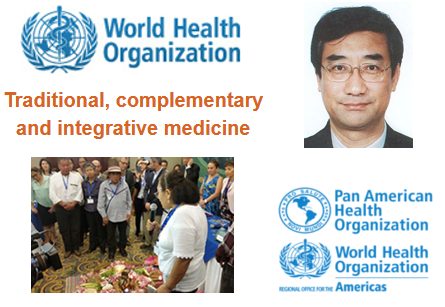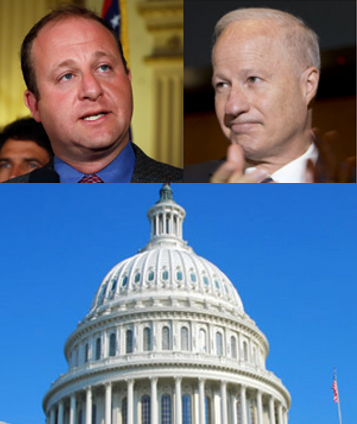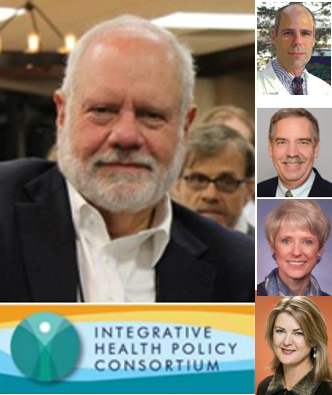
The Coming of the Light - solstice and the rise of integrative health and medicine
The Integrator Blog News & Report annually marks the winter solstice with a Top 10 list in integrative health and medicine. The focus is on positive signs — the coming of the light — in policy and action from individuals and organizations in the field. Those for 2006-2014 are here, for 2015 here and for 2016 here. Below are the Top 10 for 2017.
1. The Samuelis’ $200-Million Investment in Integrative Health at UC Irvine: Game Changer?

Susan and Henry Samueli: $200-million for integrative health
Numero uno for 2017 was not a challenge: Susan and Henri Samueli are investing $200-million at UC Irvine to more deeply implant and grow the research, education and clinical services to support an integrative health model. The power of the gift immediately became apparent with the level of the push-back from the anti-integrative crowd and the shameful media willingness to miss the story by challenging fringe aspects of the gift. An early 2017 Huffington Post story bemoaned the shut down of the Wayne Jonas, MD-led Samueli Institute. The former East Coast beach-head for the Orange County couple for 15 years put their philanthropy at a very productive edge of research and policy in integrative health. The loss felt huge — until the ambitious, UC Irvine plan was announced. All the prior work and experience from Samuelis’ funding will have value as this huge initiative in the USA medicine takes root, and grows. Let’s hope UC Irvine shows as much courage as the Samueli’s have. And perhaps the challenges that greeted their initiative argues for them jacking up the donation to create an Institute for Integrative Health Policy as part of the Irvine plan. It could help put the initiative, and movement, on more solid footing.
2. Non-Pharmacologic and Integrative Methods in Pain Guidelines: Reversing the Therapeutic Order of the Nation

Multiple policy and scientific directives put non-pharma, integrative strategies first
If the Samuelis needed any ammunition to face the naysayers on their $200-milliion investment, governmental and non-governmental and scientific entities were, in the words of a Montana friend, guaranteed they were loaded for bear. Facing the nation’s chronic pain crisis - a.k.a. “Opioid epidemic - one after another key agency set their nets in the waters of research on non-pharmacologic care. Lo and behold, they caught enough evidence that their guidelines put and expanding range of non-pharmacologic, integrative practice and practitioners first. The kicker came when the Association of State Attorneys General put the insurance industry on notice that it was time to cover these treatments. States like Maine and Ohio and Washington started pilots on the evidence of their own - mainly with acupuncture - and Vermont reported positively on the results of their Medicaid pilot. This is of course good news for pain practice gone wrong. The better, long-term news for the actual practice of “health care” rather than disease suppression is the implanting in the nation’s clinical psyche that perhaps there are non-pharma, integrative approaches for multiple significant conditions. What a concept! This is nothing less than new habits of mind and practice to re-set the therapeutic order of the Nation.
3. Weaving the Integrative Worlds: WHO Officially Links “Integrative” and “Complementary” into its “Traditional Medicine Strategy”

WHO Trad-Med leader Zhang Qi, the re-named initiative, and a ritual kicking off the PAHO network
The 2016 Top 10 shared how the integrative medicine leaders behind the Stuttgart Declatation on Integrative Health & Medicine focused significantly on the WHO’s Traditional Medicine Strategy 2014-2023. WHO has called for optimize the use of traditional medicine “products, practices and practitioners” in achieving the goal of primary care for all. In May 2017, another set of principally integrative medicine leaders from wealthier nations again connected to the WHO strategy in the Berlin Agreement: Self Responsibility and Social Action in Practicing and Fostering Integrative Medicine and Health Globally. Zhang Qi, who directs the WHO’s work in this area, was invited to each of the conferences. He and his team began to gain more awareness of the common interests of the differently named movements. Now the the agency’s trad-med initiative has officially re-branded itself as Traditional, Complementary and Integrative Medicine. Meantime, its Western Hemisphere affiliate, PAHO is stepping up its actions through the formation of a network of such initiatives in two dozen countries. As a wrinkle for the “integrative” community, PAHO’s traditional medicine consensus was for an “articulated” rather than “integrative” model. Still, the threads of the movement are being woven into a hopeful new pattern.
4. Integrative Health and Wellness Congressional Caucus Created

Representatives Polis and Coffman: co-founders of the IHW Congressional Caucus
If significant federal policy change is a goal, then creating the right platforms for Congressional action can be a critical generative step. One proven strategy is for interested members of Congress to convene around as issue as a “Congressional caucus.” They then explore, raise awareness, and percolate policy initiatives. Until two months ago, the concepts, actors, and organizations involved with integrative health had no such home in Congress. Through work led principally by the Integrative Health Policy Consortium (IHPC) - see below - Colorado Representatives Jared Polis and Mike Coffman announced on October 25, 2017 the formation of the Integrative Health and Wellness Congressional Caucus. A campaign pushed by IHPC, the Integrator Blog and others to urge people to contact their members within a few days generated over 1880 letters from 47 states. Results of the first push will be known in January. The campaign to build the caucus with members from around the country - yours! - is still underway. Click in here - it just takes 3-5 minutes to send a letter. This is a bi-partisan breeding ground for good ideas and a health-creating future. Get your members of Congress involved!
5. Len Wisneski, MD, Chair, Integrative Health Policy Consortium: Creating a Base for a Grand Strategy

Wisneski and the organization he leads, IHPC, plus IHPC leaders Reddy, Twillman, Chesney and Haeger
Even in the deepest of interprofessional and integrative tribes, it remains a truism that an MD chair can be key to growth and advancement. Len Wisneski, MD, chair of the Integrative Health Policy Consortium (IHPC), has passionately filled that role for a decade for the leading policy arm of the USA’s integrative movement. In Wisneski’s term, IHPC has broadened from a mostly “CAM” base to now 24 Partners for Health: from a homeopathic certification organization to Integrative Medicine for the Underserved, from the Academy of Integrative Health and Medicine to midwives, medical acupuncturists and music therapists.This year Wisneski and his growing team: led development of the Integrative Health and Medicine Congressional Caucus - see above; actively participated in comment writing in multiple policy issues (thanks to board member Bill Reddy, LAc); played key roles with the first Integrative Pain Policy Summit (led by board member Bob Twillman, PhD); helped produce the timely and efficient, 4-organization-endorsed Moving Beyond Medications info-sheet (thanks to IHPC’s special adviser, who Wisneski brought in, Margaret Chesney, PhD). Meantime, IHPC just completed a strategic plan and enters 2018 with a grand strategy (special thanks to Susan Haeger). Here’s a wish that visionary investors in health will link in! Alignment of interest note: I serve on the IHPC board where I watch Wisneski in action!
6. The Consortium: Three Significant Acts of Pain Policy Leadership Suggest the Potential of Its Policy Leverage

Saper, Tick and Nielsen: evidence of the clout the Consortium can have in the policy arena
The question on the table is what leverage might the 70 plus members of the Academic Consortium for Academic Medicine and Health (a.k.a. The Consortium) have if it put significant energy toward policy leadership for the transformation begged by the organization’s definition? Under the direction of chair Robert Saper, MD, MPH, the organization has shown more policy engagement and with it, additional evidence of its muscle. The Consortium took a step toward collaboration in linking with other organizations on the Moving Beyond Medications info-sheet. Prioritization of engagement in the pain dialogue took additional form with the publication of a white paper led by Heather Tick, MD and acupuncturist-researcher Arya Nielsen, PhD, LAc that does not mince words on urging the medical profession to right the damage of a drug-addled pain strategy. The billboard, however, for what the Consortium can mean for heathcare policy is its success, also driven by Nielsen, in urging the Joint Commission to begin scoring their accredited institutions on the ways they are using non-pharma, integrative treatments. Here’s hoping that such muscle will continue as the group owns its influence for change as The Consortium.
7. Paul Mills, PhD: Research and Action Portolio Spans Glyphosates at JAMA to Consciousness Research and Tibetan Medicine

Mills, the JAMA-related Glyphosate work, and activism for Tibetan medicine
UCSD researcher Paul Mills, PhD added urgency to the debate over Glyphosates with his research published in JAMA on the agent’s rapid uptake into humans since the expansion of GMOs in the mid-1990s. With a research team that included Deepak Chopra, MD and neuroscientist Rudolph Tanzi, PhD, Mills published Change in Sense of Nondual Awareness and Spiritual Awakening in Response to a Multidimensional Well-Being Program. The outcomes suggested that “an intensive program providing holistic instruction and experience in mind–body practices can lead to a significant and sustained shift in perception of self-awareness, one that is likely favorable to well-being.” Mills, the director of the UCSD Center of Excellence for Research and Training in Integrative Health, was not content as a researcher-educator. His concern related to Glyphosates led to the citizen science project called Herbicide Awareness and Research Project (HARP). And his fascination with the whole system of Tibetan medicine led to a leading role in putting on an October conference at Harvard on the field. Meantime, his integrative health base at UCSD has expanded through splitting into multiple departments - good news for shareholders in integrative health. Quite a year!
8. John Scaringe, DC, EdD: Leadership in Interprofessionalism and Culture in Academic Medicine

SCU’s Scaringe with three distinct investments: Snider, Schmalzl, and Whedon in the pursuit of team care and quality culture
One tough trick for moving practitioners from professional silos to stimulating team care requires nothing less than simultaneously breaking both internal and external patterns, habits and beliefs. No one in the integrative health academic leadership has taken this on in the way John Scaringe, DC, EdD has in his role as president of the multidisciplinary Southern California University of Health Sciences. The leader of the former Los Angeles College of Chiropractic that now has programs in acupuncture, integrative physicians assistant, Ayurvedic medicine, massage therapy and more, has repeatedly sent team leaders to participate with conventional academic health center leaders in Interprofessional Education Collaborative (IPEC) intensives. Curriculum across programs has been shifted so students can learn “about, from, and with” members of other professions - the definition of of interprofessional education. Knowing the stresses of change in health professional education, he brought in a national leader in forging relations between multiple professions, Pamela Snider, ND. Snider lead a year-long process as Chief Culture Officer. Scaringe’s SCU environment has proved conducive to such interprofessional teaching methods as the yoga-neuroscience laboratory offered by Laura Schmalzl, PhD. And knowing that where the rubber meets the road for all of this work is finding gainful employment for SCU graduates, Scaringe brought in former Dartmouth health services researcher James Whedon, DC, MS, whose work is building a base for cost savings and enhanced pain treatment. Remarkable strategic investments.
9. American Chiropractic Association Goes for Integration, Joins Choosing Wisely Movement

ACA president David Herd, DC and re-branding with Choosing Wisely participation
In 2017, the American Chiropractic Association took some significant steps to remake itself and re-frame its relationship to the nation’s 75,000 chiropractors. Early in the year, the dominant of the two often sparring - if not all-out warring - national professional associations (the other is the International Chiropractic Association) took a controversial step by announcing it was joining the Choosing Wisely movement. The ACA went for the gusto and took on its profession’s use of spinal imaging. Then, later in the year the organization pushed its membership toward full integration with the dominant medical system through a new a Pledge of Professional Values and updated treatment guidelines. These were wrapped into a significant re-branding. Inside the change was a shift in strategy toward the other professional association. Under the leadership of David Herd, DC, the ACA took the position that it would no longer present itself as the agency for the whole profession, only for its members. What this will mean for the profession will be seen. There is no question however that the organization is seeking a new relationship to the dominant school of medicine.
10. NIH NCCIH’s Wendy Weber, ND, PhD and the Women Leading the Naturopathic Medical Profession

Weber at NIH NCCIH and naturopathic women in their profession’s leadership
A high percentage of the professionals drawn to integrative practice fields are women. So it should be no surprise that the first physician level profession in which leadership is dominated by women physicians would be the naturopathic medical profession. At this year’s annual conference of the American Association of Naturopathic Physicians (AANP), the fact that 75%-85% of incoming naturopathic medical students are women burst into a full flowering of women leadership. Its four most significant leadership posts are now women (lower row, L-R: outgoing AANP president Jacelyn Chasse, ND executive director Laura Farr, incoming AANP president Jaquel Patterson, ND, MBA and Institute for Natural Medicine president Michelle Simon, ND, PhD). All four of the profession’s banquet night awardees were women (upper row L-R Griffin McMath, ND, Razi Berry, Amy Rothernberg, ND and Jane Guiltinan, ND). Then at year’s end, as if to underscore the arrival of these leaders, naturopathic physician Wendy Weber, ND, PhD, MPH was named acting deputy director of the NIH National Center for Complementary and Integrative Medicine. Weber became the first member of any of the distinctly licensed integrative health professions to have assumed such a level of leadership anywhere in the NIH. Guild leadership has historically been dominated by a competitive, battling and embattled, male energy. What will this leadership by mean?
And in the Spirit of Coco: Six Exited Leaders Whose Spirits We Serve Ourselves to Keep Alive

George Lewith ... Fredi Kronenberg ... Dave Mittelman ... Bill Brevoort ... Ather Ali ... James Duke
The month-by-month year in review of the Integrator Blog was repeatedly punctuated by news of another death of a significant leader. First, one of the handful of most influential researchers in the field, globally, George Lewith, MD. Another researcher, women’s health and botanicals leader Fredi Kronenberg, PhD, who founded the integrative center at Columbia and inspired the creation of JACM, the first indexed publication in the field. Another was a man not well known to many but whose earnings funded an important integrative philanthropy, Dave Mittelman. Then the Chinese herb pioneer and "Buddha Brother, Tonic Master, StarGazer, Veggie Gardener, and WisdomGiver,” Bill Brevoort. The integrative medicine and naturopathic fields were shocked with the truly untimely exit of a versatile, quiet force in the field, Yale integrative medicine leader Ather Ali, ND, MPH, MSc. Then in late November, the ripples again moved through herbal world with word that one of the most significant influencers, teachers, scientists, and raconteurs associated with the revitalization of botanical medicine, James Duke, PhD had died. For an integrative movement with origins in the 1960s, this theme may, unfortunately, be a keeper. In the sweet spirit of respect for those from whom we come as expressed in the holiday movie Coco, here is a collective “wall” for these dead whose spirits and work live on in us.
... and to Ruth Westreich, for backing the chronicling, commenting and cajoling ...

Ruth Westreich and the chronicling she makes possible
Finally, impossible to leave off without great gratitude to Ruth Westreich. Her generosity and commitment to health creation provide the financial backing for my time and energy in chronicling, commenting and cajoling that make up the Integrator Blog. Sign up here for the 2-4 times monthly Integrator updates. Here’s to the very best for 2018.
